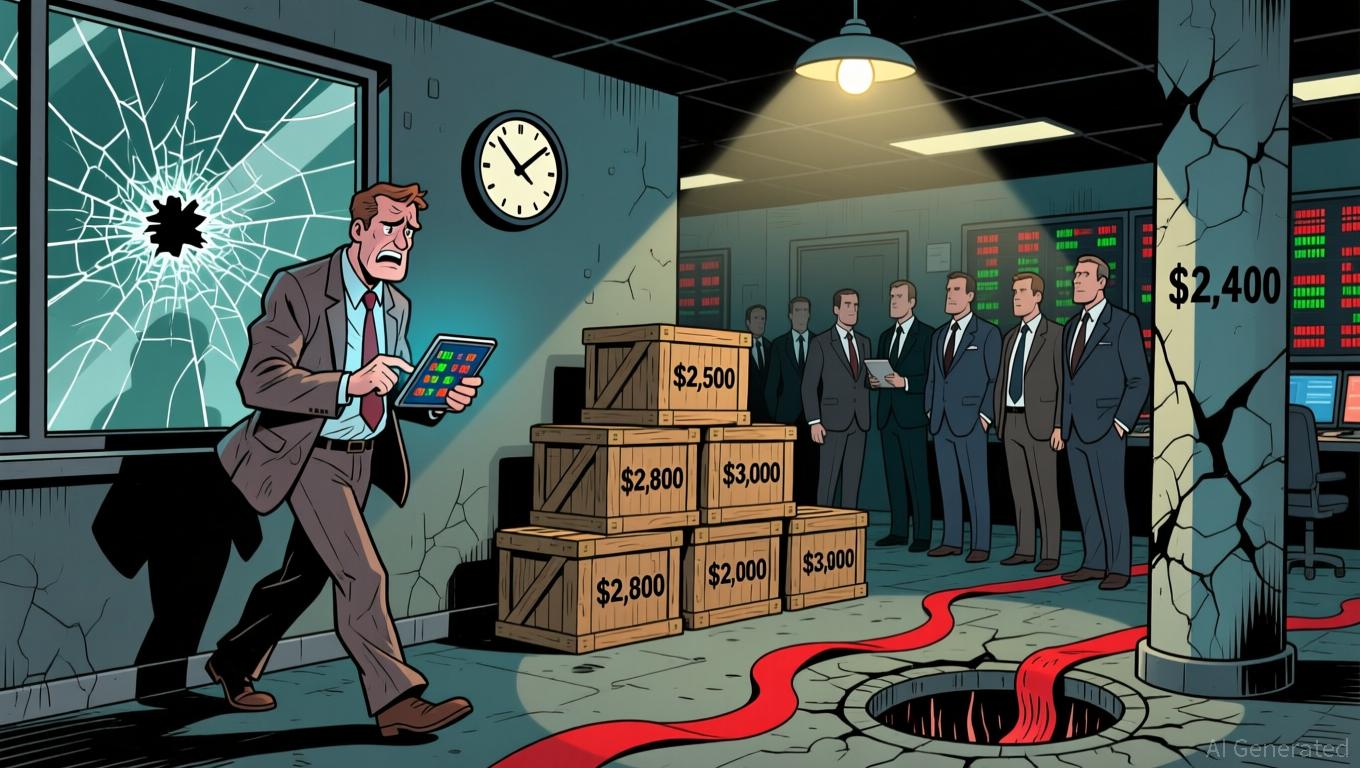Dogecoin News Today: Dogecoin's First ETF Launch: Meme Culture Faces Off Against Institutional Barriers
- Grayscale's GDOG ETF and Bitwise's BWOW ETF marked Dogecoin's first U.S. physically-backed institutional access, aligning it with Bitcoin and Ethereum in regulated markets. - ETF debut faced muted trading volumes below $12M forecasts, attributed to cautious sentiment and meme coin volatility despite Grayscale's utility-focused marketing. - Trump's decentralized DOGE Service continues efficiency reforms through embedded staff, raising accountability concerns amid operational disruptions from cost-cutting.
Dogecoin, originally created as a joke, has rapidly become a central topic in both financial markets and political discussions. Its recent milestones highlight its shifting significance within institutional and regulatory spheres. The introduction of Grayscale’s GDOG ETF on NYSE Arca in late November 2025 represented a breakthrough as the first U.S. exchange-traded product physically backed by

The price of Dogecoin has reflected this blend of momentum and uncertainty. Around the ETF’s launch, Dogecoin hovered near $0.15, with short-term price swings fueled by arbitrage and fluctuating demand
Regulatory uncertainty remains a major challenge, with the SEC’s shifting approach to cryptocurrencies causing tension. While the Trump administration has expressed support for the industry, established exchanges such as Nasdaq and Deutsche Boerse have cautioned against regulatory loopholes that could threaten market stability
Looking forward, the future of Dogecoin ETFs will depend on investor trust, regulatory developments, and whether Dogecoin can shift from being a meme-based token to one with real-world utility. Grayscale’s fee discounts and the competitive ETF environment could encourage broader adoption over time, but significant obstacles persist. As the market adapts, Dogecoin’s evolution from an internet meme to a regulated investment product continues to reshape the digital asset landscape in mainstream finance.
Disclaimer: The content of this article solely reflects the author's opinion and does not represent the platform in any capacity. This article is not intended to serve as a reference for making investment decisions.
You may also like
XRP News Today: Abu Dhabi’s Green Light Establishes UAE as a Pioneer in Stablecoin Development
- Ripple's RLUSD stablecoin gains Abu Dhabi regulatory approval as UAE advances digital finance leadership. - ADGM's "Accepted Fiat-Referenced Token" designation enables institutional use for lending and cross-border payments. - RLUSD's $1.2B market cap growth reflects institutional demand, backed by USD reserves and dual blockchain operations. - UAE's ADGM-DIFC regulatory synergy attracts global fintechs , with Ripple expanding partnerships across Africa and Asia. - Regulatory milestones position RLUSD to
Ethereum Updates: Ethereum Drops to $2,800, Prompting Surge in Demand for ZKP's Hardware-Based Presale
- Ethereum's price fell below $2,800, triggering $6.5M liquidations and testing critical support levels amid declining on-chain demand metrics. - Institutional players like BitMine accumulated 3.62M ETH (~$10.4B) despite the selloff, signaling long-term bullish conviction. - ZKP's hardware-driven presale gained traction with $17M in ready-to-ship Proof Pods and Miami Dolphins partnership for privacy-focused sports analytics. - Mutuum Finance's $19M DeFi presale and ZKP's auction model with $50K wallet caps

Vitalik Buterin Supports ZKsync: What This Means for Layer 2 Scaling
- Vitalik Buterin endorsed ZKsync in late 2025, highlighting its "underrated and valuable" work alongside the Atlas upgrade achieving 15,000 TPS and $0.0001 fees. - ZKsync's zero-knowledge rollups and EVM compatibility enabled institutional adoption by Deutsche Bank , Sony , and Goldman Sachs for cross-chain and enterprise use cases. - The Fusaka upgrade aims to double throughput to 30,000 TPS by December 2025, positioning ZKsync to compete with Polygon zkEVM and StarkNet in Ethereum's Layer 2 landscape. -

The ZK Atlas Enhancement: Revolutionizing Blockchain Scalability?
- ZKsync's 2025 Atlas Upgrade achieves 15,000–43,000 TPS with sub-1-second finality, addressing Ethereum L2 scalability bottlenecks via Airbender proofs and modular OS. - DeFi protocols like Aave and Lido leverage ZKsync's $0.0001/tx costs to unify liquidity, while Deutsche Bank and Sony adopt its trustless cross-chain infrastructure for compliance and transparency. - ZK token surged 150% post-upgrade, with TVL hitting $3.3B and analysts projecting 60.7% CAGR for ZK Layer-2 solutions by 2031 amid instituti
